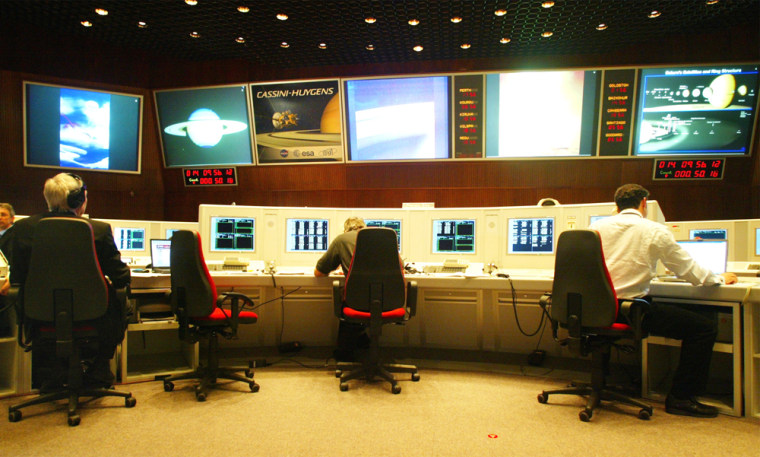U.S. and European researchers are lauding the effectiveness of a network of ground-based telescopes that has apparently salvaged a wind experiment feared lost during a mission to the surface of Saturn’s moon Titan.
Astronomers were able to use a global group of radio telescopes and a simple signal tone bleated by Europe’s Huygens probe during its Jan. 14 Titan landing to determine the moon’s wind characteristics.
Early analysis of the data has given researchers a good look at the winds of Titan, despite a communications error that prevented the probe’s primary data target — NASA’s Cassini orbiter currently circling Saturn — from receiving wind observations from the Huygens probe.
“The original idea was to use Cassini’s onboard receiver for Doppler ranging, and later the ground stations were for a second line of sight,” Walter Brisken, a staff scientist for the National Radio Astronomy Observatory, said in a telephone interview. “But we were pretty sure we had the sensitivity needed and were fairly confident that things would work out.”
Brisken worked at the NRAO’s Green Bank Telescope in West Virginia, which first detected the Huygens probe’s signal announcing its successful entry into Titan’s atmosphere. Other ground-based telescopes, including nine from the Very Large Baseline Array, monitored the Huygens signal. The Huygens probe itself was built by the European Space Agency.
By combining Doppler shift data from the Green Bank Telescope and other radio instruments, astronomers now know that while Titan’s winds are relatively weak at the moon’s surface, they reach nearly 270 miles (434 kilometer) an hour at an altitude of about 75 miles (120 kilometers). At an altitude of about 37 miles (59 kilometers), Huygens found highly variable winds that may be a region of vertical wind shear, mission scientists said.
“I’ve never felt such exhilarating highs and dispiriting lows than those experienced when we first detected the signal from the GBT, indicating ‘all’s well,’ and then discovering that we had no signal at the operations center, indicating ‘all’s lost,’” the Doppler wind experiment’s principal investigator, Michael Bird of Germany’s University of Bonn, said in a written statement. “The truth, as we have now determined, lies somewhat closer to the former than the latter.”
Ground-based observations of the Huygens probe’s descent gave astronomers a glimpse at the north-south attributes of Titan’s winds, but it was the Cassini spacecraft that was expected to return data on the moon’s east-west wind patterns. While that data is lost, Huygens researchers say the ground data was able to track the spacecraft’s Titan descent to within three-quarters of a mile (one kilometer) and ultimately yield a three-dimensional picture of the probe’s landing.
“It’s sort of an awakening of sorts,” Brisken said. “Now that we have the technology to do this so easily, it might be a more normal thing in the future.”
